Laguiole en Aubrac cutlery
Our history
Laguiole en Aubrac have played a key role in the revival of the cutlery tradition in the Aubrac Plateau region and in the Aveyron department. A strong and beautiful tradition, which had gradually faded away over time. Local and traditional craftsmanship is an integral part of our cutlery’s DNA. In this way, Laguiole en Aubrac has its own forge and its workshops are located in the historic area of the Laguiole knife.
THE CUTLERY CRAFT IN ESPALION
The cutlery activity in Espalion dates back several hundred years. Under the ‘Ancien Régime’, there were already several cutlery workshops established in the village, producing so-called carters’ knives. By the end of the 17th century, Espalion had become one of the clandestine centres for the assembly of “jambettes stéphanoises”, also known as “eustaches” ; these inexpensive pocket knives with a single-nail from Saint-Etienne that would inspire the creation of the Laguiole knife a few years later.
Several master cutlers from Saint-Etienne thus settled in Espalion to manufacture and assemble knives that would be sold to Aubrac farmers at cattle fairs and by hawkers from Auvergne.
Two specific ’eustache’ were particularly popular in Aubrac farms and burons: knives with a wood or moulded horn handle, the first one curved with a pointed blade (the Laguiole yatagan blade) and the second one with a ‘corbin beak tail’ and a so-called Bourbonnaise blade (point centred, back and edge of blade parallel).
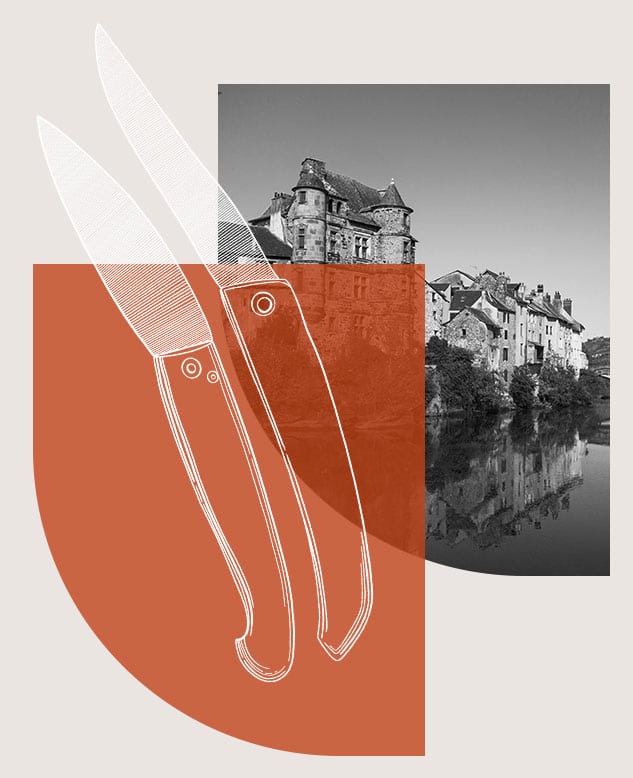

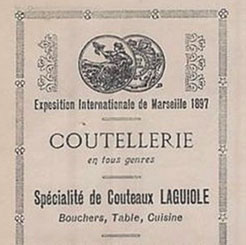
Among cutlers families established in the village of Espalion, the Canels had a strong influence in the late 17th and early 18th centuries. Mathieu Canel, the son, was in turn a master cutler and became Bayle of the Saint-Eloi brotherhood in Espalion. This very old and still active brotherhood gather all the trades associated with blacksmithing and metalwork.
Later, in the 1870s, the Salettes workshop is established in Espalion. The Salettes family was closely linked to Aubrac cutlery and related to the Belmon, Pagès and Calmels cutlers. The Salettes forged their own blades in a large forge hearth and made Laguiole knives by hand until 1930, when the workshop was destroyed by fire.
A few years earlier, in 1897, they won a Silver Medal at the International Fair in Marseille for an exceptional knife made in association with Pagès and Calmels.
Source : ‘Laguiole Histoire d’un couteau d’exception’ by Christian Lemasson, Ethnographer
LAGUIOLE EN AUBRAC CRAFTSHOP
The village of Espalion, characterised above all by its strong cultural heritage in cutlery, was Christian Valat’s choice to establish Laguiole in Aubrac. His vision, based on respect for tradition, led him to create a forge to manufacture the metal parts of the knife. Thanks to this facility, Laguiole en Aubrac is among the rare cutleries that craft handmade Laguiole knives from A to Z.

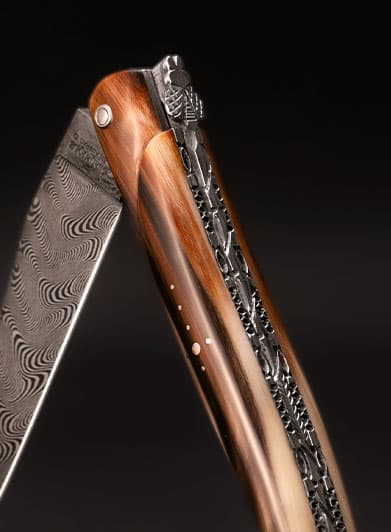
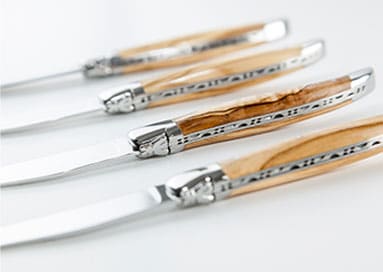
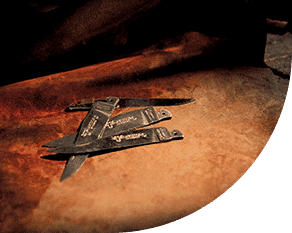
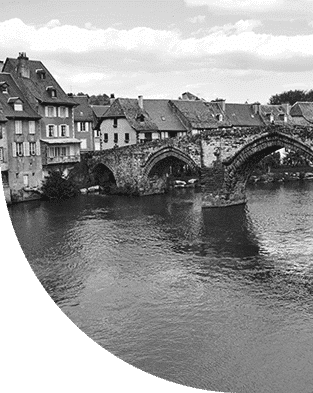
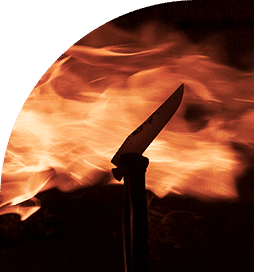
Laguiole en Aubrac cutlery is built around local know-how. Its identity is based on two key elements: craftmanship within the Laguiole origin area and the respect of traditional practices. These criteria of excellence allowed us to obtain the EPV label: ‘Entreprise du Patrimoine Vivant’ (Living Heritage Company), which rewards emblematic French companies that stand out for their expertise.
By combining craftsmanship and creativity, Laguiole en Aubrac has become a brand that proudly represents French cutlery on the international stage.
The secret of the Laguiole knife lies in its history. It is a strong product, deeply rooted in French heritage, that preserved all its beauty and around which many legends and anecdotes have been created.
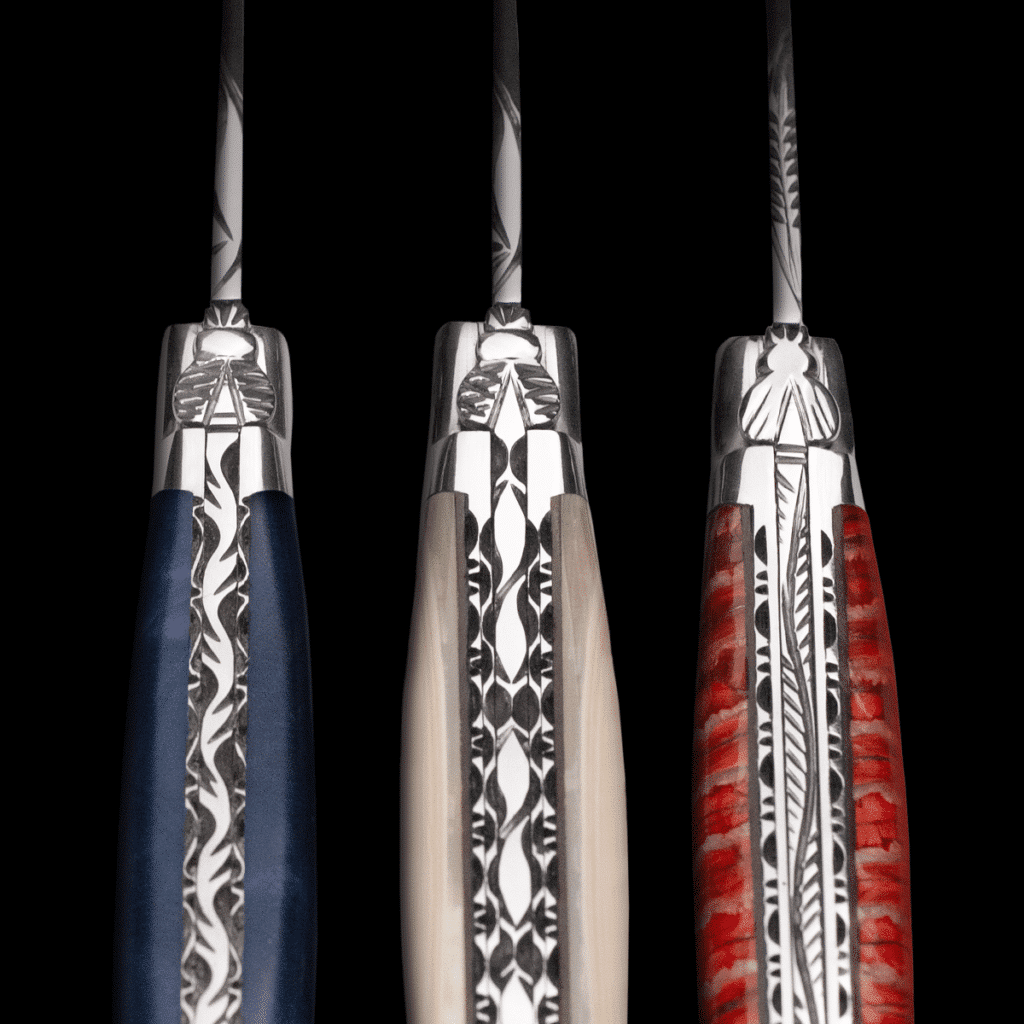
« The worthy tradition
is the one living
in the spirit of its time »
Today, in the Laguiole en Aubrac workshops, each knife is made according to tradition, by a single cutler.
At the same time, the cutlery is developing new knife designs and is offering a wide choice of materials, from the most traditional like horn or wood to the most modern like carbon fibre or precious stones. Our symbolic motto: « The worthy tradition is the one living in the spirit of its time ».
Alto Braco
The origin of the word ‘Aubrac’ comes from the local language of our region: the Occitan. It is made up of the words ‘alto’ and ‘braco’, which together give an accurate description of this unique and legendary region.

